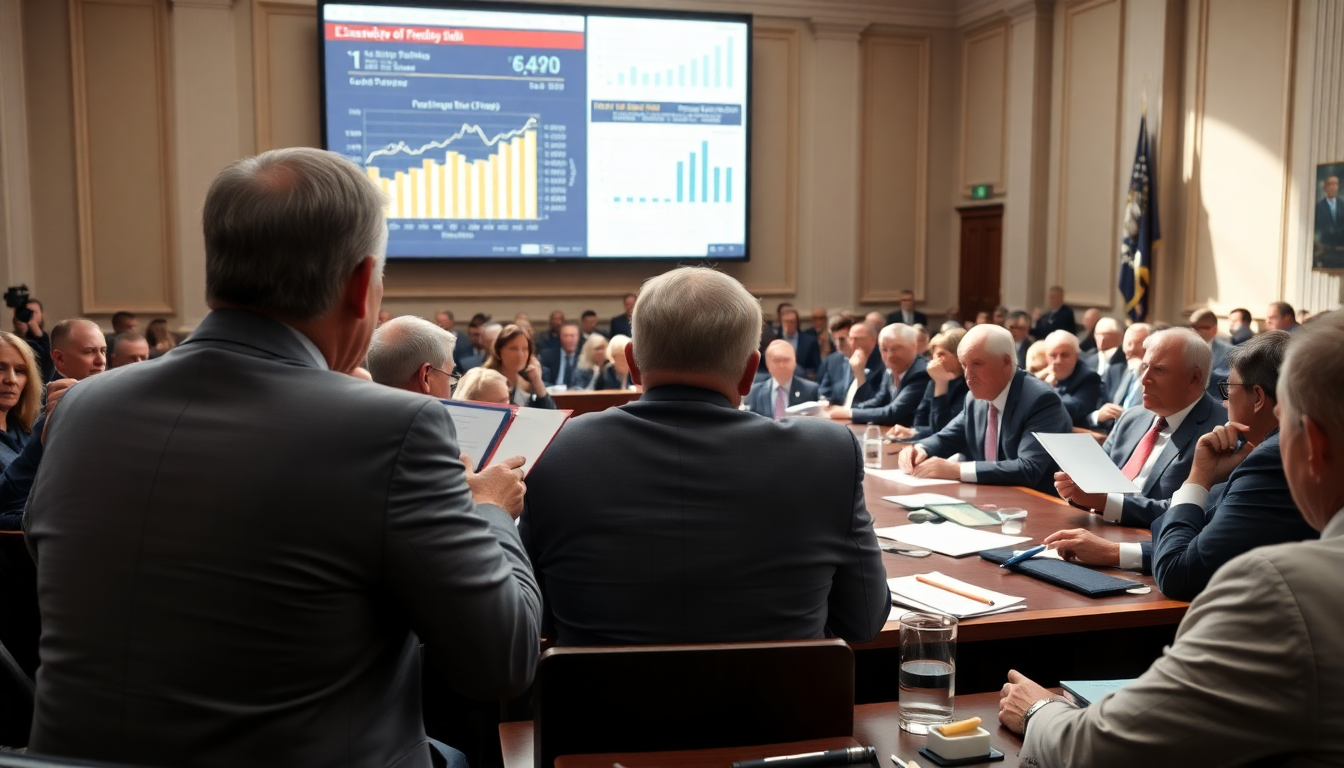Table of Contents
As the political landscape shifts, President Trump’s ambitious spending bill is grabbing headlines and sparking conversations across the nation. After a marathon 12-hour debate in the House Rules Committee, the bill is gearing up for a chamber-wide vote, representing a crucial step in Trump’s broader agenda. Dubbed a “big, beautiful bill,” it seeks to deliver on various campaign promises, but it also raises important questions about its potential impact on the national debt and economic fairness. So, what does this mean for everyday Americans?
Current Market Overview and Legislative Context
The U.S. economy is navigating a complex landscape as Congress deliberates over President Trump’s spending bill. This legislation arrives at a moment when economic indicators hint at both growth opportunities and financial risks, especially concerning the national debt, which has now surpassed a staggering $36 trillion. The House Rules Committee’s decision to advance the bill signals a strong inclination among Republicans to get behind it, even with notable dissent from some conservative factions.
Interestingly, during the committee’s recent session, only two Republicans voiced opposition to the bill. This underscores a broader consensus among GOP members who view it as a necessary compromise. For many, it represents a pivotal step toward implementing Trump’s fiscal policies. However, Democrats have raised significant objections, arguing that the bill amounts to a hefty tax cut favoring wealthy Americans while risking crucial services like Medicaid for lower-income citizens. How will this play out in the long run?
As the bill moves forward, it’s crucial to evaluate its potential economic effects. Key provisions aim to relieve financial pressure on middle-class families through tax credits and deductions related to overtime and tipped wages. This focus on the working class may resonate with a segment of voters, but the long-term fiscal implications remain hotly debated. Can this really help those who need it most?
Analyzing Regional Impacts and Areas of Concern
The debate around the spending bill is far from straightforward, as various stakeholders express concerns over its effects on state budgets and local economies. The legislation proposes shifting more Medicaid costs to states—especially those that expanded their programs under the Affordable Care Act—potentially placing a heavier burden on local governments. This transition raises pressing questions about state budget sustainability and whether local taxes might need to rise to accommodate these changes.
Moreover, the bill’s extensive scope—over 900 pages—covers numerous economic levers, including defense spending, energy policy, and tax reform. The complexity of these issues means lawmakers must tread carefully, considering how changes in one area could create ripples throughout the economy. For instance, while the proposed tax cuts might boost consumer spending in the short term, they could worsen the national debt, presenting a long-term fiscal challenge. Are we trading short-term gains for long-term pain?
Additionally, moderates within the Republican party are raising eyebrows about the implications of some Senate amendments, particularly those affecting Medicaid funding. This internal tension may complicate the path forward, indicating that bipartisan support will be essential for the bill’s final passage. Will lawmakers come together for a common cause?
Investment Opportunities and Future Outlook
As the political climate shifts, potential investors should keep a close eye on the implications of Trump’s spending bill. The focus on middle-class relief could translate into increased disposable income for families, potentially driving demand across various sectors, particularly in real estate. Furthermore, ongoing discussions regarding tax credits may significantly influence buyer sentiment and market dynamics. How can investors capitalize on this moment?
In the months ahead, as the bill nears finalization, investors would do well to analyze local housing markets, paying attention to regional economic indicators. The interplay between federal policy and local economic conditions will be crucial in shaping investment strategies. Areas likely to benefit from increased consumer spending might see housing prices rise, creating opportunities for savvy investors. Is this the right time to jump into the market?
Looking ahead, the trajectory of the national debt and its potential impact on interest rates will also be key factors to consider. If the bill manages to stimulate economic growth without worsening debt levels, it could create a favorable environment for real estate investments. However, if the opposite occurs, investors may need to adjust their strategies in light of possible market corrections. What’s your game plan for navigating these changes?
In summary, Trump’s spending bill marks a significant moment in American economic policy. Its implications will reverberate across various sectors, and stakeholders must stay informed and agile as the situation unfolds. Are you ready to adapt to this evolving landscape?


